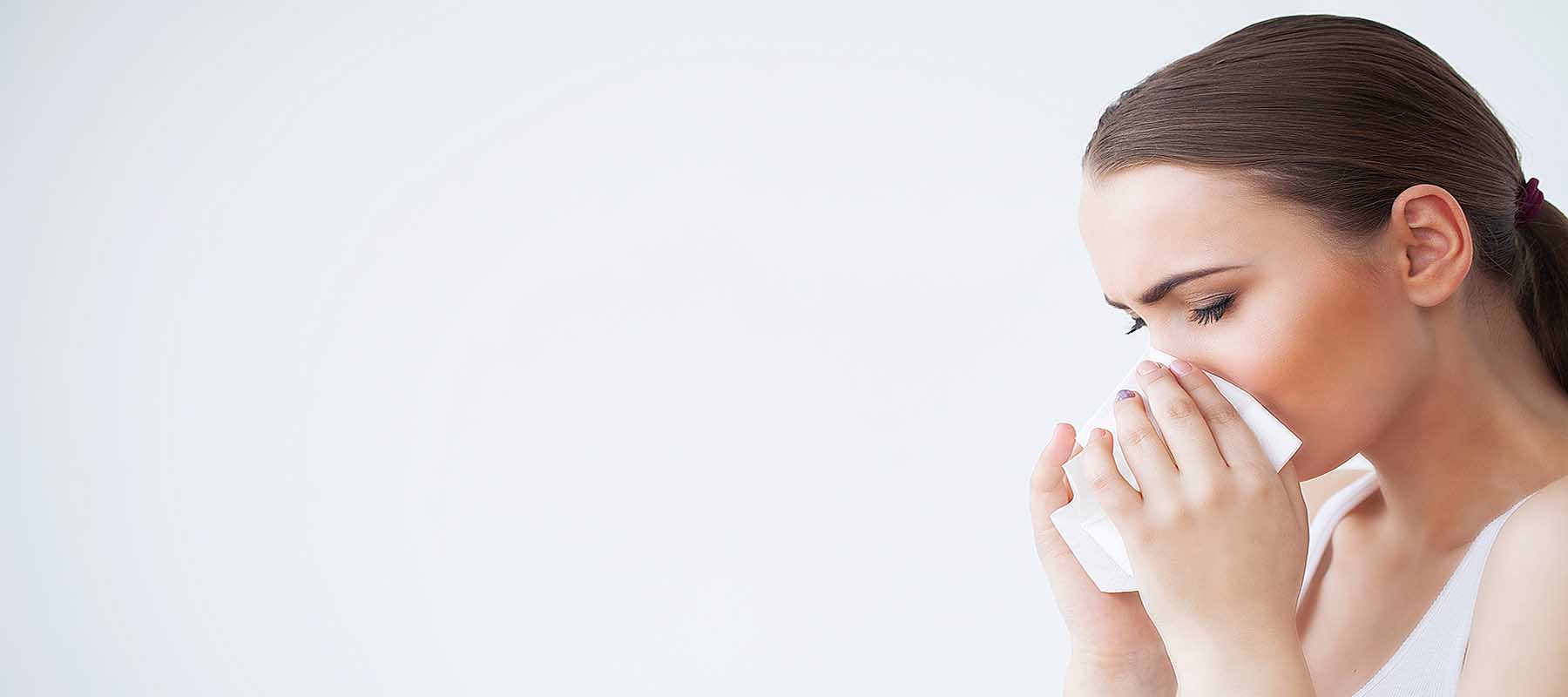The Allergy Store has been telling people for years about the health problems associated with dust mites. Turns out there might be more to worry about in your mattress, pillows, and bed linens than just dust mites.
What is Sick Bed Syndrome?
Dr. Lisa Ackerly, home health hygienist, described Sick Bed Syndrome to the Daily Mail as a condition where the bed becomes a breeding ground not only for dust mites, but disease causing bacteria and viruses.
She explains because people spend a lot of time in their beds, with many choosing to sleep naked, mattresses can become a breeding ground for micro-organisms, that trigger a range of nasty illnesses. You can read the entire article about Sick Bed Syndrome here.
Raw Facts on Sleeping in the Nude
 Even though it is common, sleeping in the nude can spread disease. Dr. Ackerly explains that if you are carrying norovirus with no symptoms and sleeping in the nude, you are contaminating your linens with a virus that will survive regular washing. That means you can continue to contaminate you and loved ones again and again and again.
Even though it is common, sleeping in the nude can spread disease. Dr. Ackerly explains that if you are carrying norovirus with no symptoms and sleeping in the nude, you are contaminating your linens with a virus that will survive regular washing. That means you can continue to contaminate you and loved ones again and again and again.
Salmonella (food poisoning) can also be shed onto the bed sheets if you sleep in the nude.
As it is, we shed skin cells constantly in our bed, by sleeping in the nude more of those cells make to our sheets, mattresses and pillows than if they were captured by nightclothes.
Combating Sick Bed Syndrome
Hopefully you are not reading about this in bed at 3 am. If you are, we’ve probably ruined any chance you had of getting a good night’s sleep. Sorry. But there are some practical things you can do to combat sick bed syndrome.
Lower Humidity. Lower the humidity and lower the molds and dust mites in your bedroom.
Vacuum Frequently. Dr. Ackerly recommends frequent “hoovering” (you have to love those British terms) of the bedroom. To those of us in the US, that means to vacuum often. She also recommends that you have a hard surface floor in the bedroom.
Disinfect Linens. Frequent hot water washing is recommended.  Sheets, pillow cases, and blankets should be removed from the bed and laundered in 140°F water. To combat bacteria and viruses, add Vital Oxide disinfecting agent to the wash. If you are allergic to dust mites, De-Mite Laundry Additive will get rid of the little buggers in cold or warm water.
Sheets, pillow cases, and blankets should be removed from the bed and laundered in 140°F water. To combat bacteria and viruses, add Vital Oxide disinfecting agent to the wash. If you are allergic to dust mites, De-Mite Laundry Additive will get rid of the little buggers in cold or warm water.
Do a Separate Load. Wash bed linens separately to prevent transfer of any contamination from linens to clothing. she recommends that if you send your linens out to a commercial laundry, that you inquire about the use of disinfecting agents and the temperature of the water they use for washing. Some companies wash with cooler water to reduce risk of damaging fabrics.
Protect your Bed. Use zippered mattress covers to zip up your  mattress and keep out dust mites, molds, and pollen. Zippered pillow covers are also available to protect your pillows.
mattress and keep out dust mites, molds, and pollen. Zippered pillow covers are also available to protect your pillows.
Expose Duvets. Dr. Ackerly also recommends that you “air” out your duvets on a regular basis. By exposing them to sunlight, you reduce moisture (see step 1) making them much healthier for sleeping. If you don’t have the “alpine” air she mentions, you can still hang outside on a sunny day.
Sick bed syndrome can be avoided and the bonus is that many of the same steps that you take to prevent sick bed syndrome will also help you relieve your allergy symptoms. Now there is some allergy news to cheer about.
Til Next Time
Cheryl



